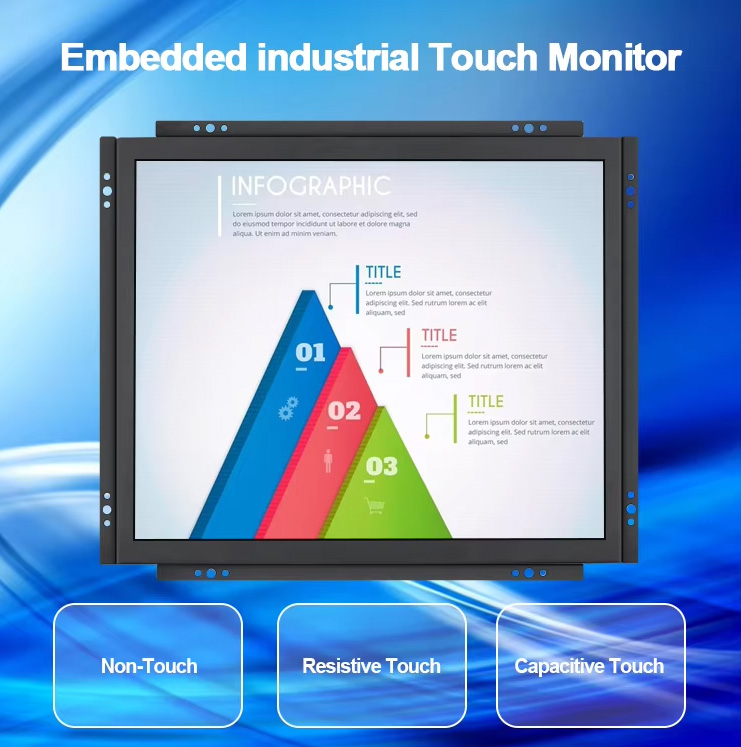Los monitores de escritorio son monitores de consumo que la mayoría de la población mundial utiliza como pantalla para su computadora. A Monitor de pantalla táctil resistente Es básicamente un monitor de escritorio desmontado hasta el chasis y los componentes desnudos con una superposición de vidrio táctil integrada para facilitar a los fabricantes de ingenieros originales (OEM) integrar la unidad en una carcasa más grande. En su mayor parte, un Industrial Tocar Pantalla Monitor es mejor conocido como un monitor de pantalla táctil de marco abierto o un monitor de marco abierto. La unidad en sí es un chasis metálico que sostiene los componentes internos del monitor, junto con el panel LCD, sin carcasa ni bisel. Un componente clave que tienen los monitores de pantalla táctil industriales es que todos los componentes están hechos de materiales de calidad industrial y, por lo general, durarán más y serán mucho más duraderos que los productos de calidad de consumo. Con OSCAN Pantallas táctiles de grado industrial Todas las dimensiones mecánicas de la unidad seguirán siendo las mismas durante toda la vida útil del monitor. En la mayoría de los casos, los monitores industriales de pantalla táctil tienen piezas que son mucho más fáciles de reemplazar o reparar, si hay algún componente dañado.

¿Qué son las aplicaciones de monitores industriales con pantalla táctil?
Los monitores de pantalla táctil industriales son adecuados para aplicaciones de alta resistencia que se utilizan continuamente, ya sea por parte de los trabajadores o del público. Algunos buenos ejemplos serían las máquinas CNC para aplicaciones industriales. En este tipo de entorno, los monitores de pantalla táctil industriales siempre se ponen a prueba para soportar duras condiciones de funcionamiento, donde la unidad debe durar, de lo contrario, toda la unidad no funcionará. Otro ejemplo de entorno hostil sería un quiosco. A menudo, los monitores de pantalla táctil de grado industrial se integran en un quiosco para soportar el acercamiento constante de personas que someterán el quiosco a muchos abusos. En general, un monitor de pantalla táctil industrial se utiliza principalmente para integrarse en gabinetes o máquinas más grandes para operar. Los monitores de pantalla táctil industriales probablemente se utilizarán en aplicaciones que requieren un monitor duradero que pueda durar mucho tiempo y someterse a una serie de condiciones operativas duras.
Esta tecnología se está volviendo increíblemente omnipresente, y la mayoría de los teléfonos celulares, tabletas, máquinas expendedoras de boletos, cajeros automáticos, quioscos de autoservicio e incluso sistemas GPS para automóviles funcionan con tecnología de pantalla táctil. Lo que probablemente no sepa si no está involucrado en la industria es que existen cinco tipos diferentes de tecnologías de pantalla táctil y cada una cuenta con un conjunto único de funciones y beneficios, que exploraremos en este blog.